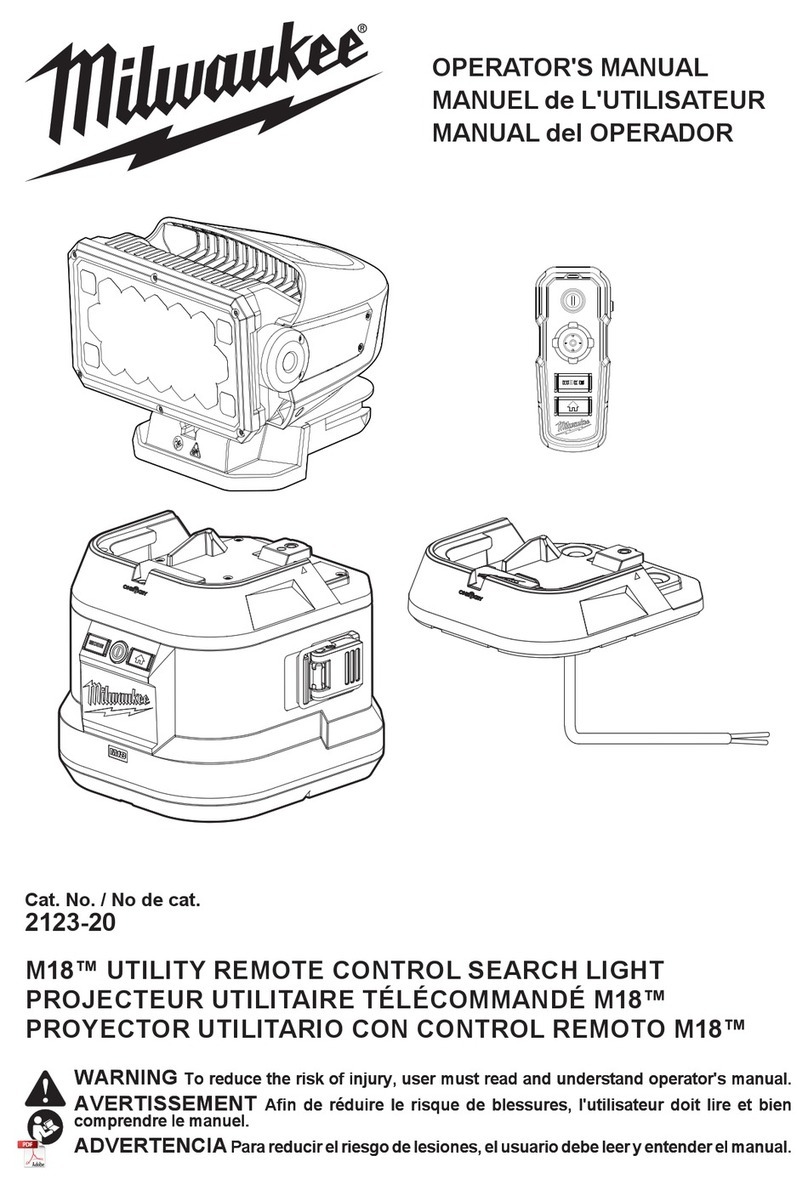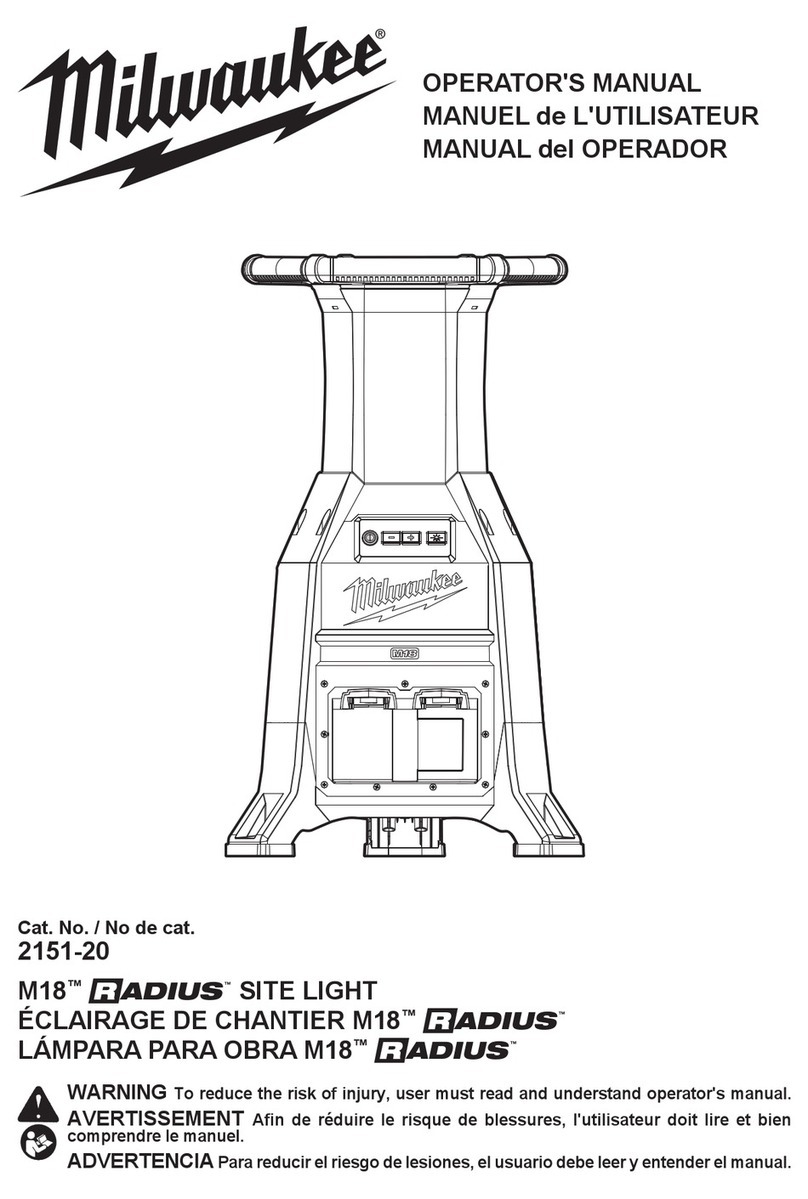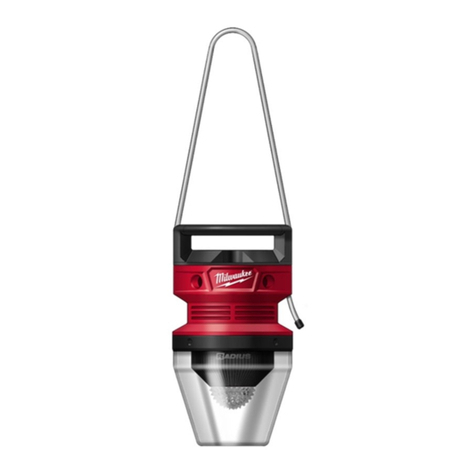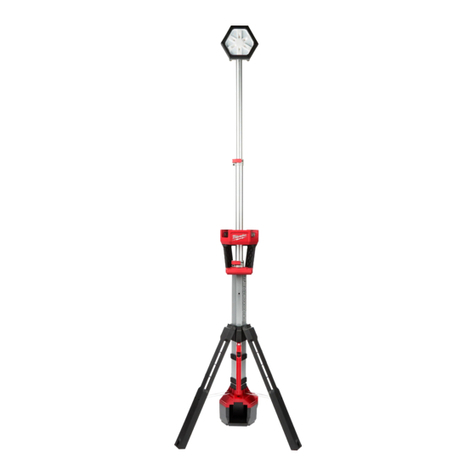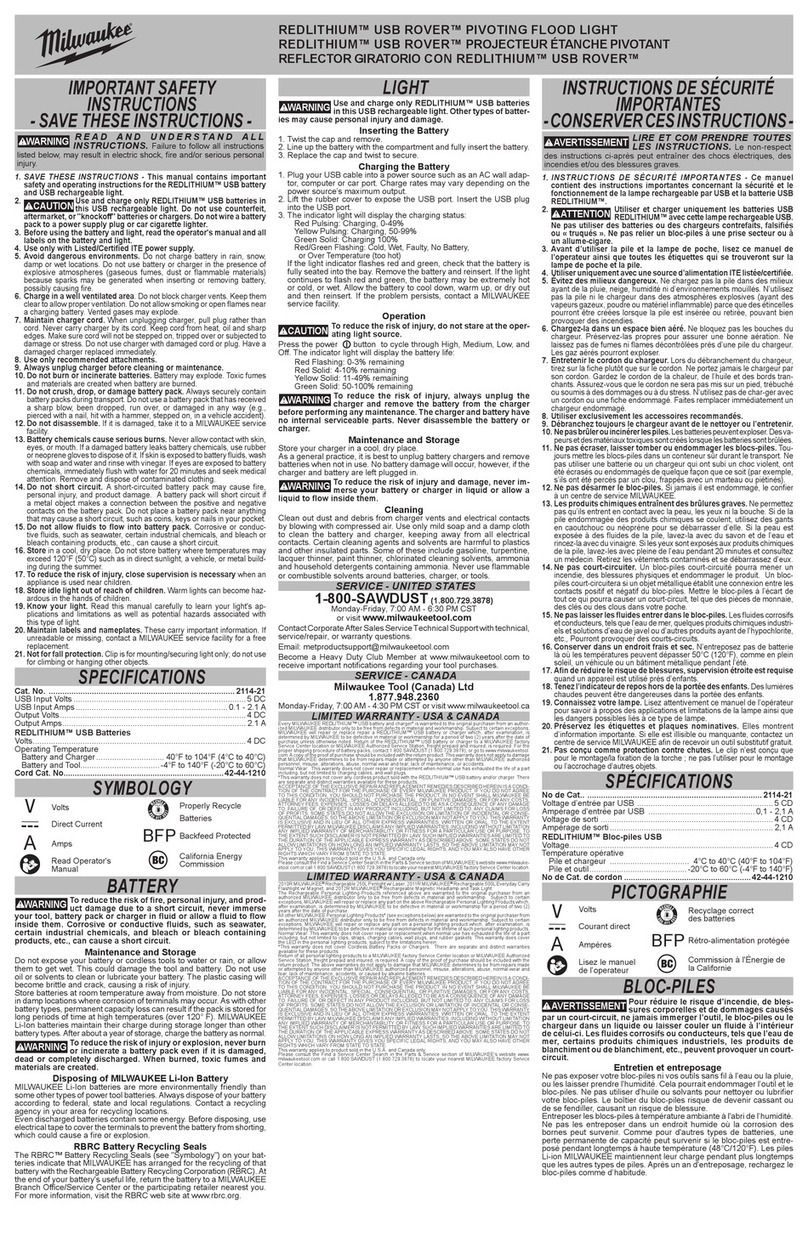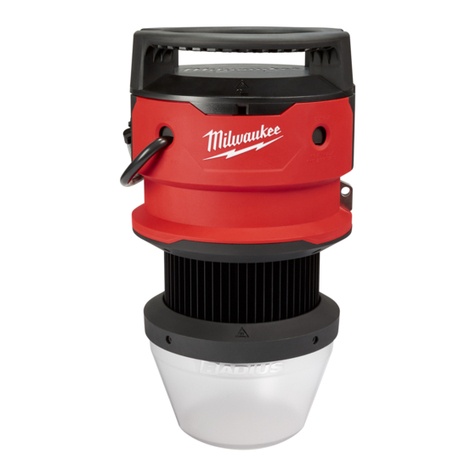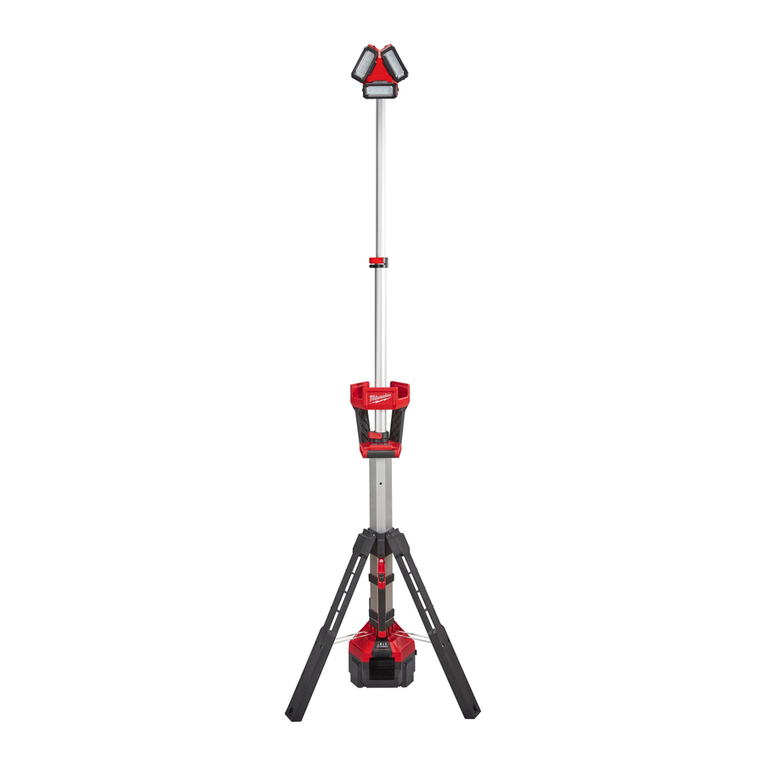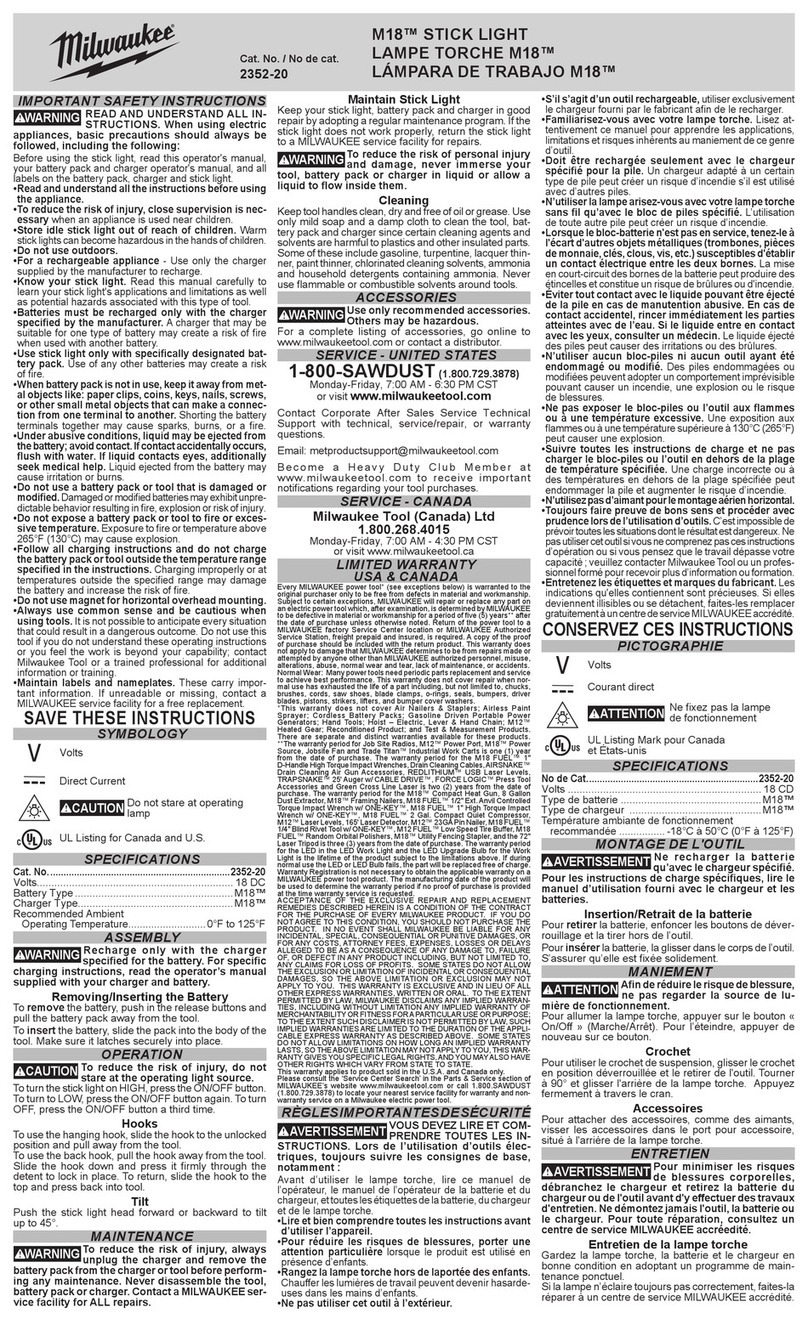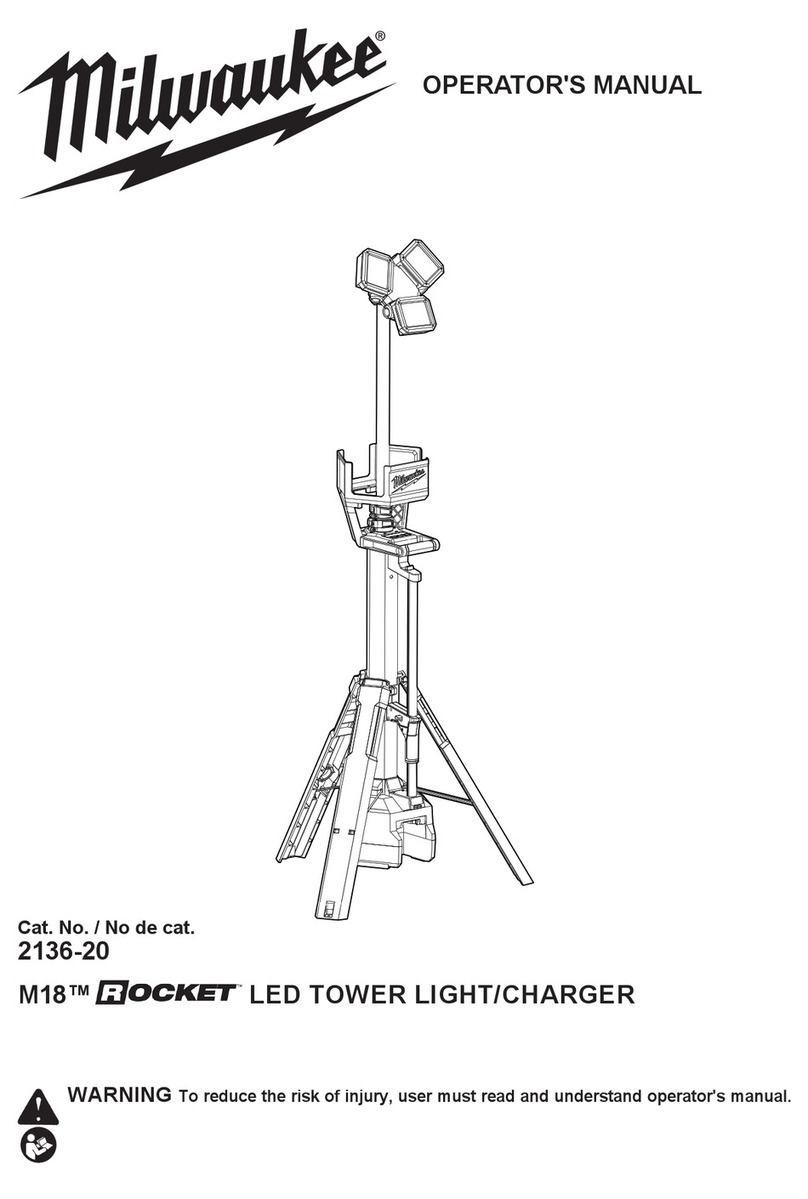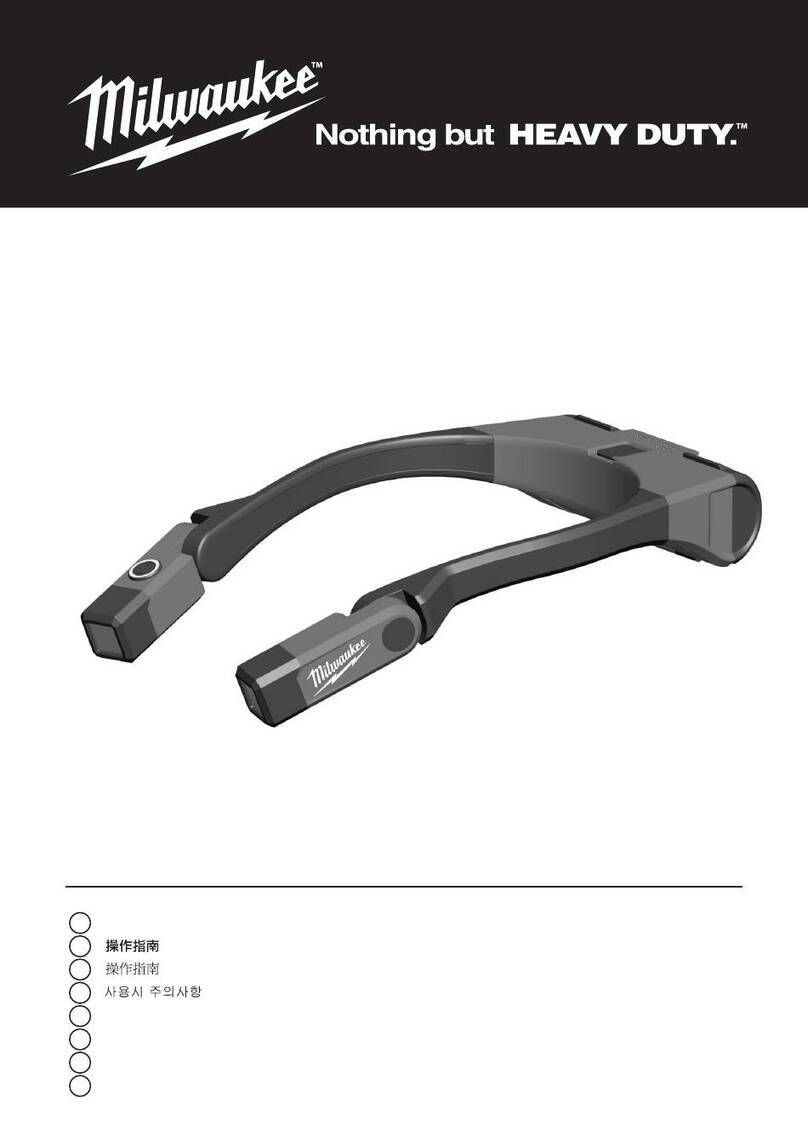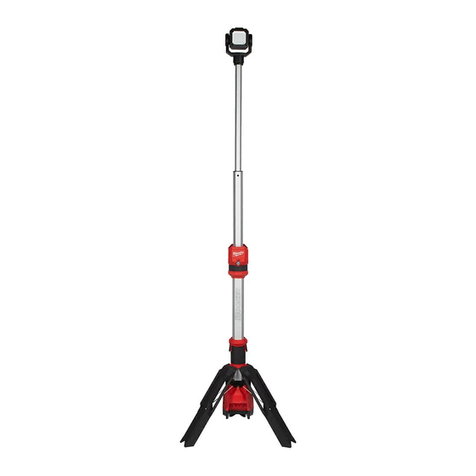
3
SYMBOLOGY
Volts
Direct Current
Alternating Current
UL Listing for Canada and U.S.
Bright Light -
Do Not Stare Into Light
SPECIFICATIONS
Cat. No...................................................... 2145-20
Ingress Protection............................................ IP54
Max Number of Lights in Sequence ....................12
Battery Type .................................................M18™
Charger Type ................................................M18™
DC Input Volts......................................................18
DC Input Amps ...................................................2.5
AC Input Volts ....................................................120
AC Input Amps.......................................................1
AC Output Volts .................................................120
AC Output Amps ................................................11*
* Reduce AC Output Amps by 1A per additional
light added in sequence.
GROUNDING
Improperlyconnecting theground-
ing wire can result in the risk of
electric shock. Check with a qualied electrician
if you are in doubt as to whether the outlet is
properly grounded. Do not modify the plug pro-
vided with the tool. Never remove the grounding
prong from the plug. Do not use the tool if the
cord or plug is damaged. If damaged, have it
repaired by a MILWAUKEE service facility before
use. If the plug will not t the outlet, have a
proper outlet installed by a qualied electrician.
Grounded Tools (Three-Prong Plugs)
Tools marked “Grounding Required” have a three
wire cord and three prong grounding plug. The plug
must be connected to a properly grounded outlet
(See Figure A). If the tool should electrically mal-
function or break down, grounding provides a low
resistance path to carry electricity away from the
user, reducing the risk of electric shock.
Thegrounding pronginthe plugis connectedthrough
the green wire inside the cord to the grounding
system in the tool. The green wire in the cord must
be the only wire connected to the tool's grounding
systemand must neverbe attachedto anelectrically
“live” terminal.
Yourtoolmustbepluggedintoanappro-
Fig. A
priate outlet, properly installed and
groundedin accordancewith allcodes
and ordinances. The plug and outlet
should look like those in Figure A.
Double Insulated Tools (Two-Prong Plugs)
Tools marked “Double Insulated” do not require ground-
ing. They have a special double insulation system which
satises OSHA requirements and complies with the
applicable standards of Underwriters
Fig. B Fig. C
Laboratories, Inc., the Canadian Stan-
dardAssociation and the National Elec-
trical Code. Double Insulated tools may
be used in either of the 120 volt outlets
shown in Figures B and C.
EXTENSION CORDS
Grounded tools require a three wire extension
cord. Double insulated tools can use either a two
or three wire extension cord. As the distance from
the supply outlet increases, you must use a heavier
gauge extension cord. Using extension cords with
inadequately sized wire causes a serious drop in
voltage, resulting in loss of power and possible tool
damage. Refer to the table shown to determine the
required minimum wire size.
Thesmaller thegaugenumber ofthewire,thegreater
the capacity of the cord. For example, a 14 gauge
cord can carry a higher current than a 16 gauge cord.
When using more than one extension cord to make
up the total length, be sure each cord contains at
least the minimum wire size required. If you are using
one extension cord for more than one tool, add the
nameplate amperes and use the sum to determine
the required minimum wire size.
Guidelines for Using Extension Cords
•If youare usingan extensioncordoutdoors, besure
it is marked with the sufx “W” to indicate that it is
acceptable for outdoor use.
• Be sure your extension cord is properly wired and in
good electrical condition. Always replace a damaged
extension cord or have it repaired by a qualied
person before using it.
• Protect your extension cords from sharp objects,
excessive heat and damp or wet areas.
•When stringing lights together, consider the total
Amperes draw when selecting the extension cords.
Recommended Minimum Wire Gauge
For Extension Cords*
Extension Cord Length
Nameplate
Amperes 25' 50' 75' 100' 150'
0 - 2.0
2.1 - 3.4
3.5 - 5.0
5.1 - 7.0
7.1 - 12.0
12.1 - 16.0
16.1 - 20.0
18
18
18
18
16
14
12
18
18
18
16
14
12
10
18
18
16
14
12
10
--
18
16
14
12
10
--
--
16
14
12
12
--
--
--
* Based on limiting the line voltage drop to ve volts at 150%
of the rated amperes.
READ AND SAVE ALL INSTRUCTIONS
FOR FUTURE USE.
ASSEMBLY
Recharge only with the charger
specied for the battery. For spe-
cic charging instructions, read the operator’s
manual supplied with your charger and battery.
Inserting/Removing the Battery
Insert the battery pack by sliding battery pack into
the body of the tool. Insert the battery pack until the
battery latches lock.
To remove the battery pack, press in both battery
latches and slide the battery pack off of the tool.
